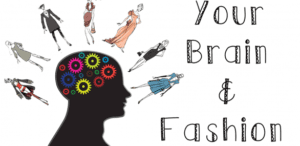Fashion is not just about clothing; it’s a powerful form of self-expression that influences how we perceive ourselves and others. Beyond the realm of aesthetics, a fascinating intersection exists between psychology and fashion. How we dress profoundly impacts our behavior and mood, Fashion Psychology reflecting a complex interplay of emotions, identity, and societal norms.
The Power of First Impressions:
Clothing serves as an instant communicator, shaping the first impressions we make. Our chosen colors, styles, and textures send signals about our personality, confidence, and socio-economic status. Researchers refer to this phenomenon as “enclothed cognition,” where the symbolic meaning of our clothes influences our cognitive processes.
Mood Elevation Through Style:
Have you ever noticed a boost in confidence when donning a favorite outfit? Fashion psychology suggests that wearing clothing we associate with positive experiences can trigger a release of feel-good hormones. This connection between clothing and mood is a testament to the emotional power embedded in our wardrobes.
Expressing Identity and Self-Concept:
Our clothing choices often serve as a visual representation of our identity and self-concept. We consciously or subconsciously select garments that align with our values, interests, and aspirations. Fashion becomes a canvas upon which we paint our evolving sense of self.
Color Psychology in Clothing:
Colors evoke specific emotional responses, a phenomenon well-documented in color psychology. For example, wearing vibrant hues like red can convey confidence and energy, while soft blues may emanate calmness. Understanding color psychology empowers individuals to curate outfits that align with their desired emotional impact.

Social Influence on Fashion Choices:
Fashion extends beyond the individual to societal and cultural dimensions. Collective preferences often shape trends and styles, and individuals may adopt specific clothing to conform, rebel, or identify with a particular group. This social influence highlights the interconnectedness between fashion and our sense of belonging.
Dressing for Success:
The phrase “dress for success” is not merely a cliché. Studies have shown that professional attire can positively impact performance and cognitive abilities. The “lab coat effect,” for instance, suggests that wearing attire associated with competence can enhance attention and focus.
The Comfort-Confidence Conundrum:
There’s a delicate balance between comfort and confidence in clothing choices. While comfortable clothing can promote ease and relaxation, stepping out of one’s comfort zone and donning a more polished or stylish ensemble can increase self-assurance and assertiveness.
Conclusion:
Fashion is a language that speaks volumes about our emotions, personality, and societal affiliations. Understanding the psychology behind clothing choices unveils how our wardrobes influence behavior and mood. From the colors we select to the styles we embrace, each sartorial decision becomes a brushstroke on the canvas of our self-expression.
As we navigate the intricate dance between fashion and psychology, it’s essential to recognize the dynamic role clothing plays in shaping our daily experiences. The next time you stand before your wardrobe, consider the psychological impact your choices may have. Fashion is not merely an external adornment; it’s a mirror reflecting the complex and beautiful tapestry of the human psyche.